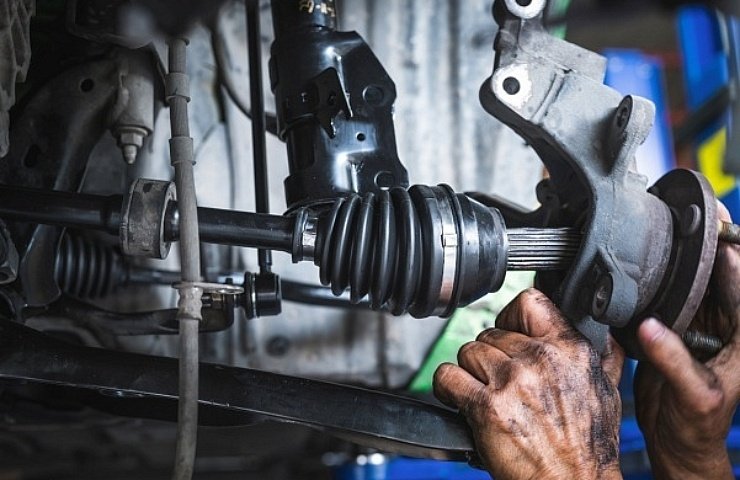
Proposed Outline
-
Introduction
-
What the CV axle is and its role in a vehicle
-
Why proper maintenance and replacement matter
-
-
Understanding the CV Axle
-
Definition of CV axle (Constant Velocity axle)
-
Components: axle shaft, CV joints, boots, grease
-
How it works in FWD, AWD, and some RWD vehicles
-
-
Common Signs of a Failing CV Axle
-
Clicking noises during turns
-
Grease leakage
-
Vibrations while driving
-
Difficulty steering or handling
-
-
Causes of CV Axle Wear and Damage
-
Torn CV boots and grease loss
-
Impact damage (potholes, accidents)
-
High mileage wear
-
Environmental factors (salt, debris, water intrusion)
-
-
Risks of Driving with a Damaged CV Axle
-
Safety hazards
-
Potential for complete axle failure
-
Damage to transmission or suspension components
-
-
Inspection and Diagnosis
-
How mechanics visually and physically inspect CV axles
-
Road test diagnostics
-
When to replace vs. when to repair
-
-
The CV Axle Replacement Process
-
Tools and equipment used
-
Step-by-step overview of replacement (without DIY unsafe steps)
-
Timeframes for service
-
-
OEM vs. Aftermarket CV Axles
-
Pros and cons of OEM parts
-
Pros and cons of aftermarket options
-
Cost differences and quality considerations
-
-
Cost of CV Axle Replacement
-
Average labor cost range
-
Average parts cost range
-
Factors that influence total price
-
-
Preventing Premature CV Axle Failure
-
Regular inspections
-
Maintaining CV boots and grease
-
Safe driving habits
-
-
Choosing a Professional CV Axle Replacement Service
-
Qualifications and certifications to look for (ASE, etc.)
-
Importance of warranties
-
Customer reviews and reputation
-
-
DIY vs. Professional Replacement
-
Risks of DIY replacement
-
When a DIY approach might be acceptable (for experienced mechanics)
-
Why professional installation is usually better
-
-
CV Axle Replacement for Different Vehicle Types
-
Front-wheel drive
-
All-wheel drive
-
Rear-wheel drive with independent suspension
-
-
Post-Replacement Care and Maintenance
-
Break-in tips (if applicable)
-
Listening for unusual noises
-
Scheduling follow-up inspections
-
-
Conclusion
-
Summary of importance
-
Encouragement to address axle issues promptly
-
